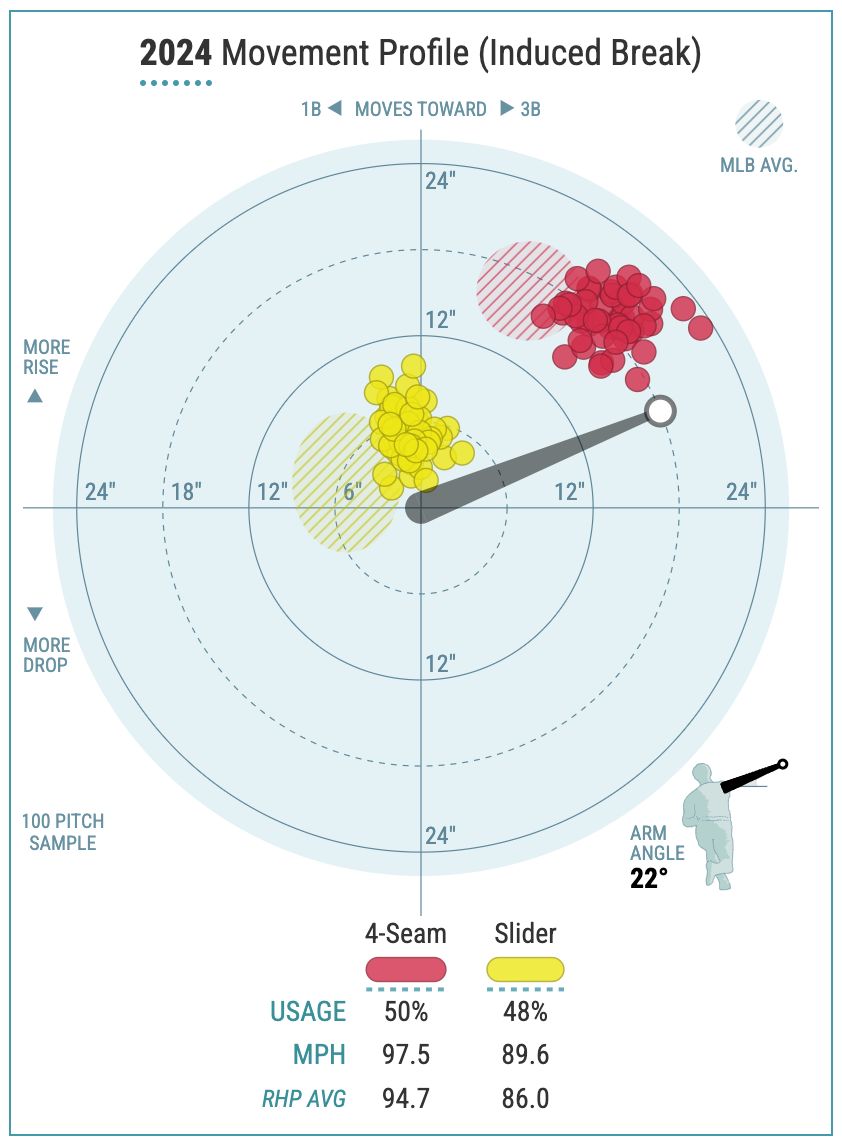In the playoffs, you won't just see the best pitchers in the world on the mound, you'll see pitchers who come at you from every angle.
You'll see submarine, sidearm, three-quarters and straight over-the-top deliveries. All the different arm slots Major League pitchers use to attack hitters will be on display.
And this is actually something we can show you for the first time. Statcast now measures every pitcher's arm angle -- zero degrees is a perfect sidearmer, 90 degrees is perfectly over the top, and negative degrees is a submariner.
The pitchers in the 2024 playoffs cover the full range. Let's take a look at the rainbow of arm slots you're going to see, highlighting some examples of pitchers across the spectrum.
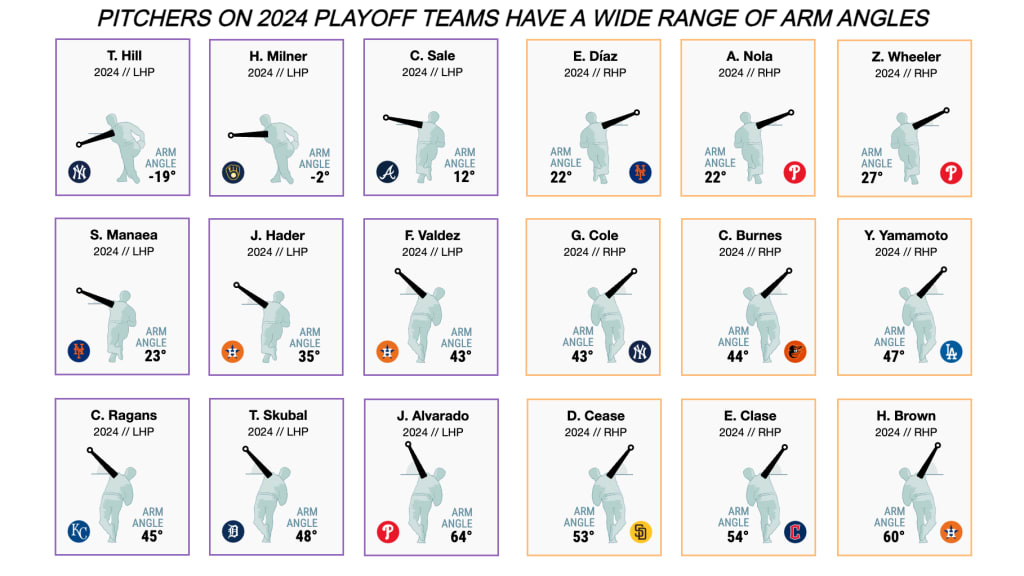
Lefty submarine -- Tim Hill, Yankees (-19 degrees)
Hill has the lowest arm slot of any left-handed pitcher in the Majors by a wide margin. The next-closest southpaw is Hoby Milner of the Brewers, who you'll also see in a lefty specialist role in these playoffs, at -2 degrees. Hill's submarine arm angle means his sinker induces a ton more drop than your average left-handed pitcher, and gives the Yankees reliever a unique look.
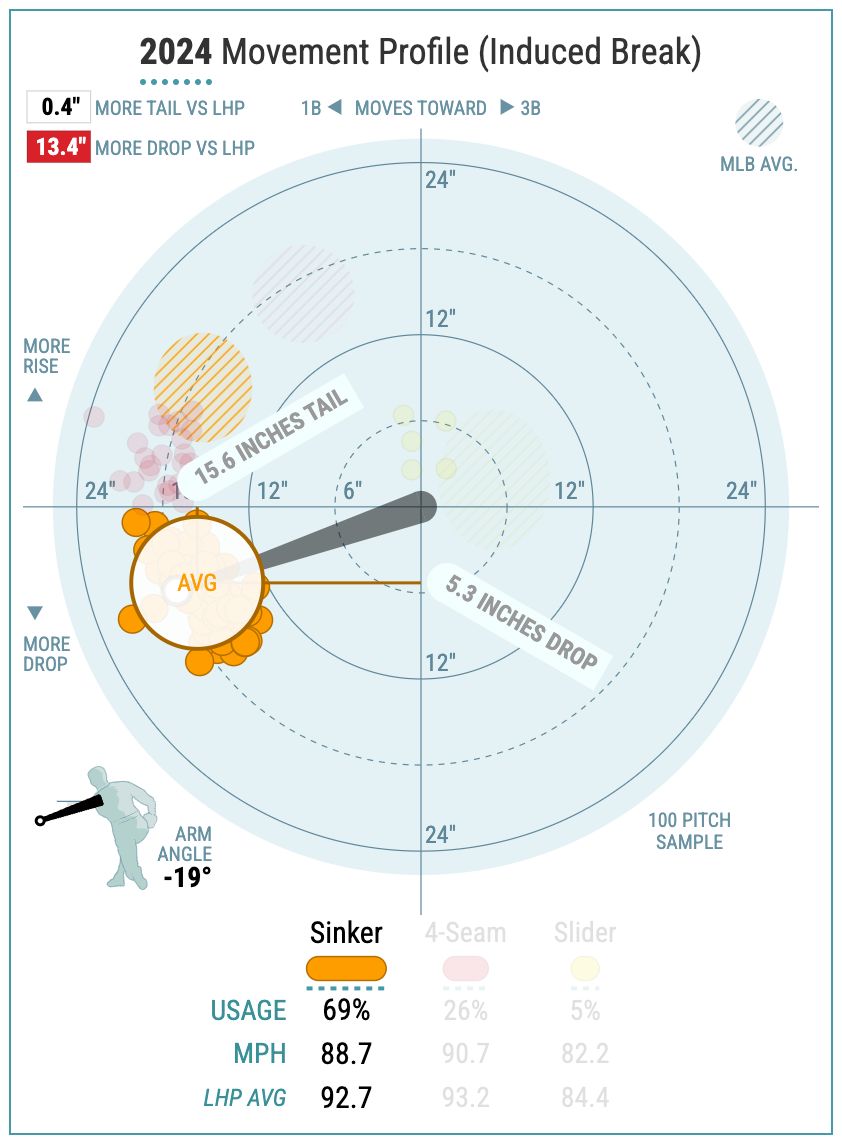
Lefty sidearm -- Chris Sale, Braves (12 degrees)
Let's hope the most renowned sidearmer in the game -- and the 2024 NL Triple Crown winner -- can recover from his Game 162 back spasms to pitch for the Braves in the Wild Card Series. Sale's crossfire delivery is the lowest of any regular starting pitcher, righty or lefty. It makes him one of the toughest pitchers to stand in against, particularly when he's sweeping his signature slider across the plate, which has both vertical and horizontal break that's way above average.
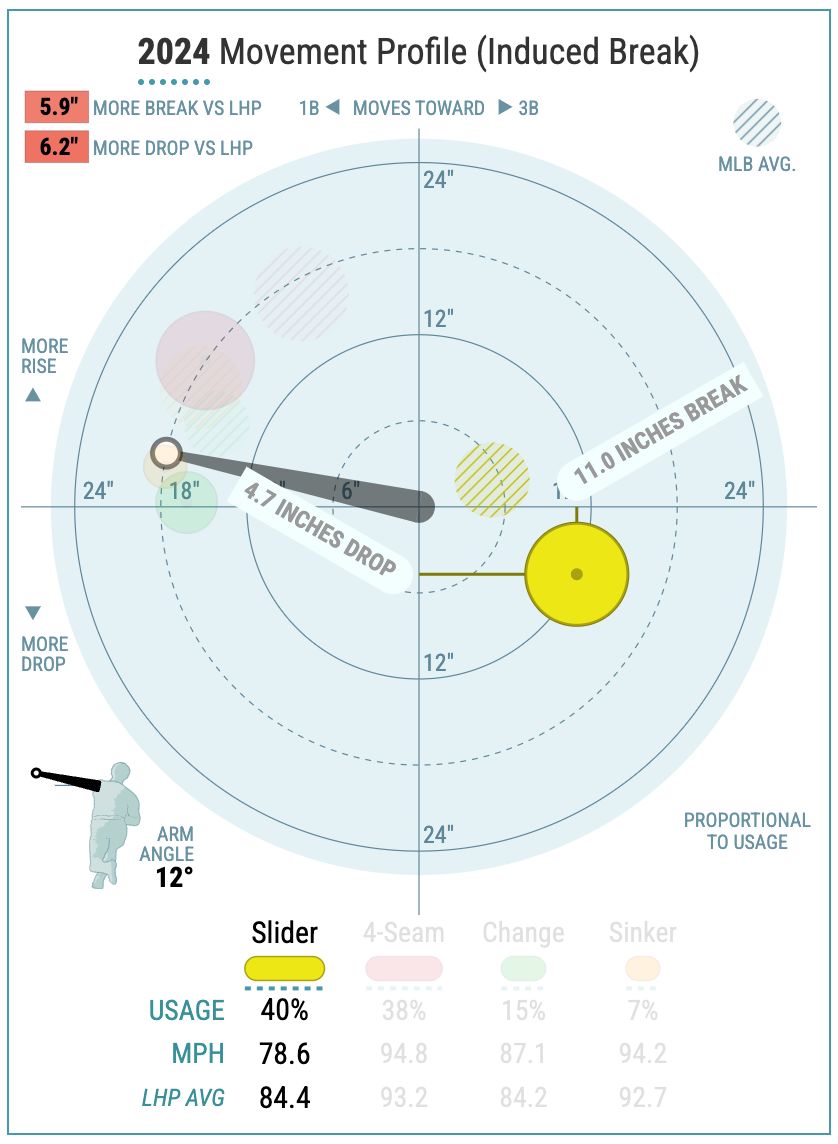
Lefty low three-quarters -- Josh Hader, Astros (35 degrees)
Hader famously has one of the best rising fastballs in baseball, and he creates that rise from a fairly low arm slot that allows his fastball to approach hitters at a very flat angle. They swing underneath it, and Hader racks up whiffs with his heater -- he had 148 of them in 2024, more than any other reliever.
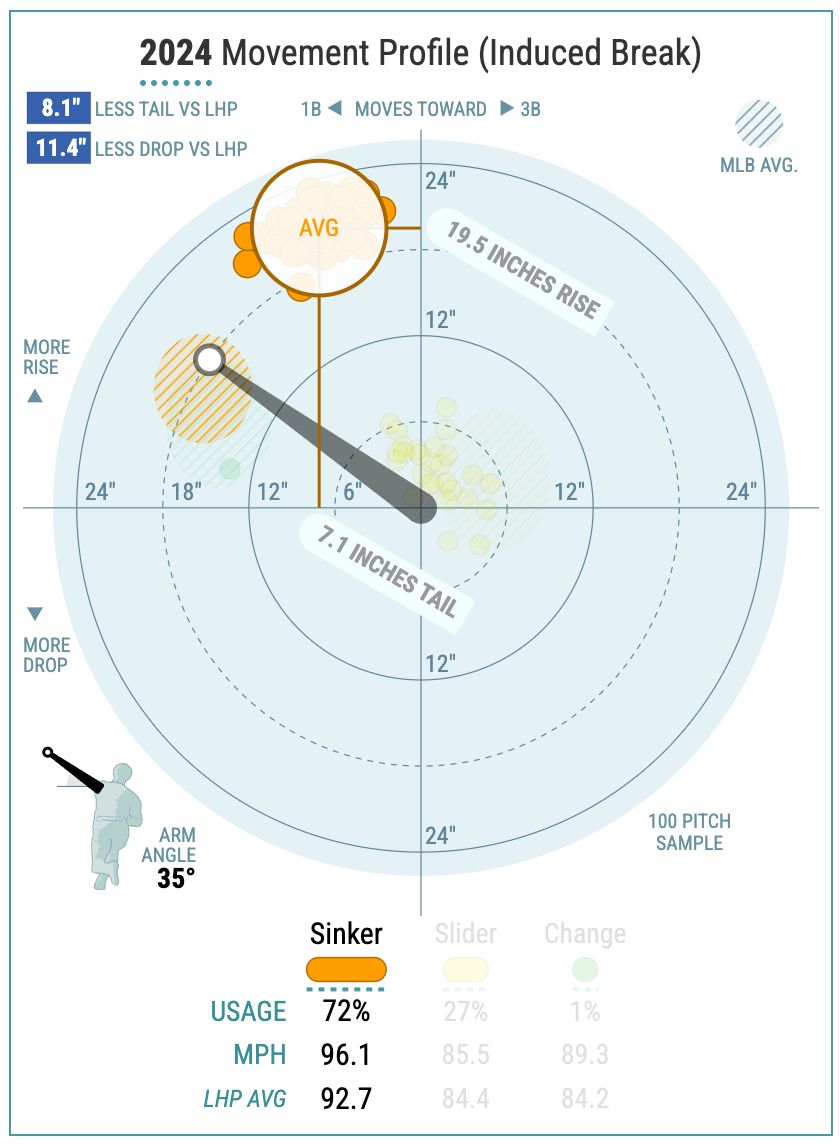
Lefty high three-quarters -- Cole Ragans, Royals (45 degrees)
Ragans delivers his pitches from the exact halfway point between straight sidearm and straight over-the-top. The Royals ace has a terrific fastball/changeup combo, and you can see on his pitch movement chart how he uses it to create deception. Ragans' four-seamer and changeup have parallel movement profiles, but his four-seamer is 95.4 mph and rises just a little bit more than you'd expect based on his arm angle, and his changeup is 84.8 mph -- a 10-plus mph difference -- and fades just a little more than you'd expect.
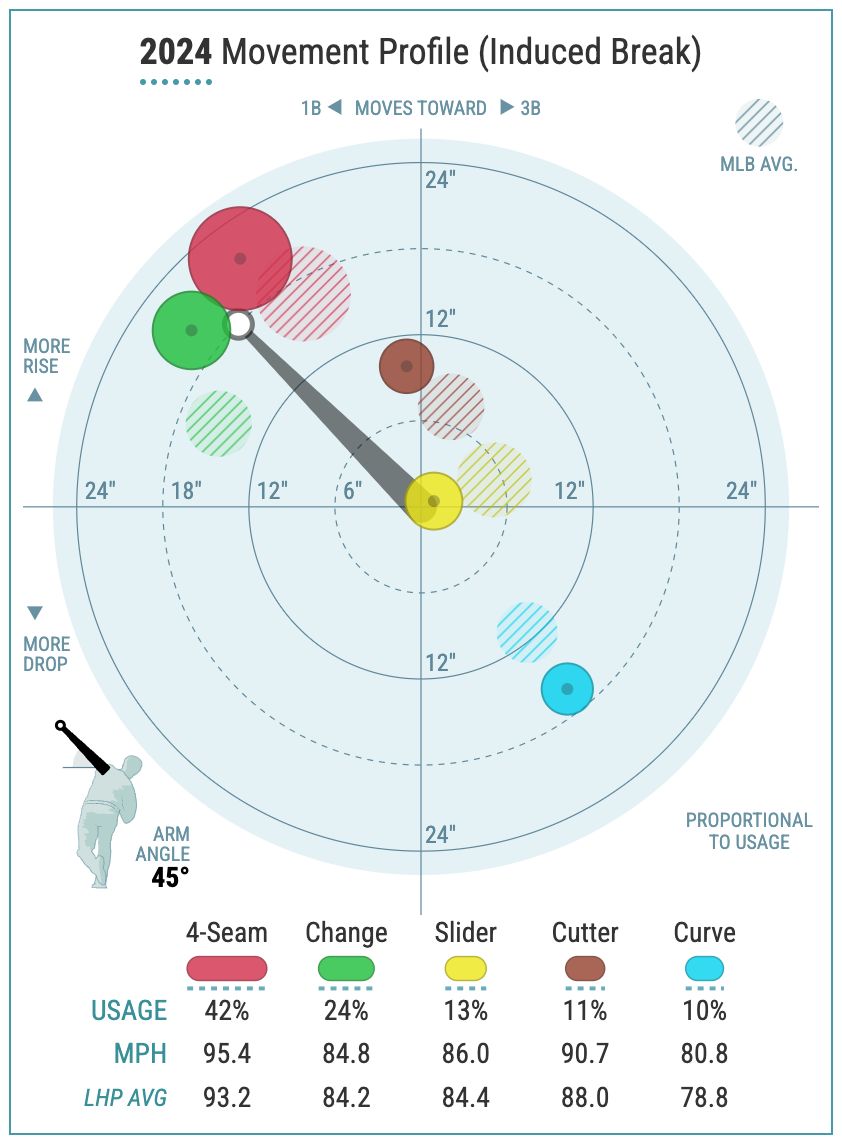
Lefty over-the-top -- Tarik Skubal, Tigers (48 degrees)
The Tigers ace and AL Triple Crown winner comes straight at you with a true power fastball (his four-seamer averaged 96.8 mph and produced 75 K's in 2024). But Skubal's nastiest pitch is his changeup (82 K's), which generates a wider range of movement by harnessing the effects of "seam-shifted wake" -- in other words, he releases his changeup with the seams of the baseball oriented in such a way that they catch the air and produce unexpected movement.
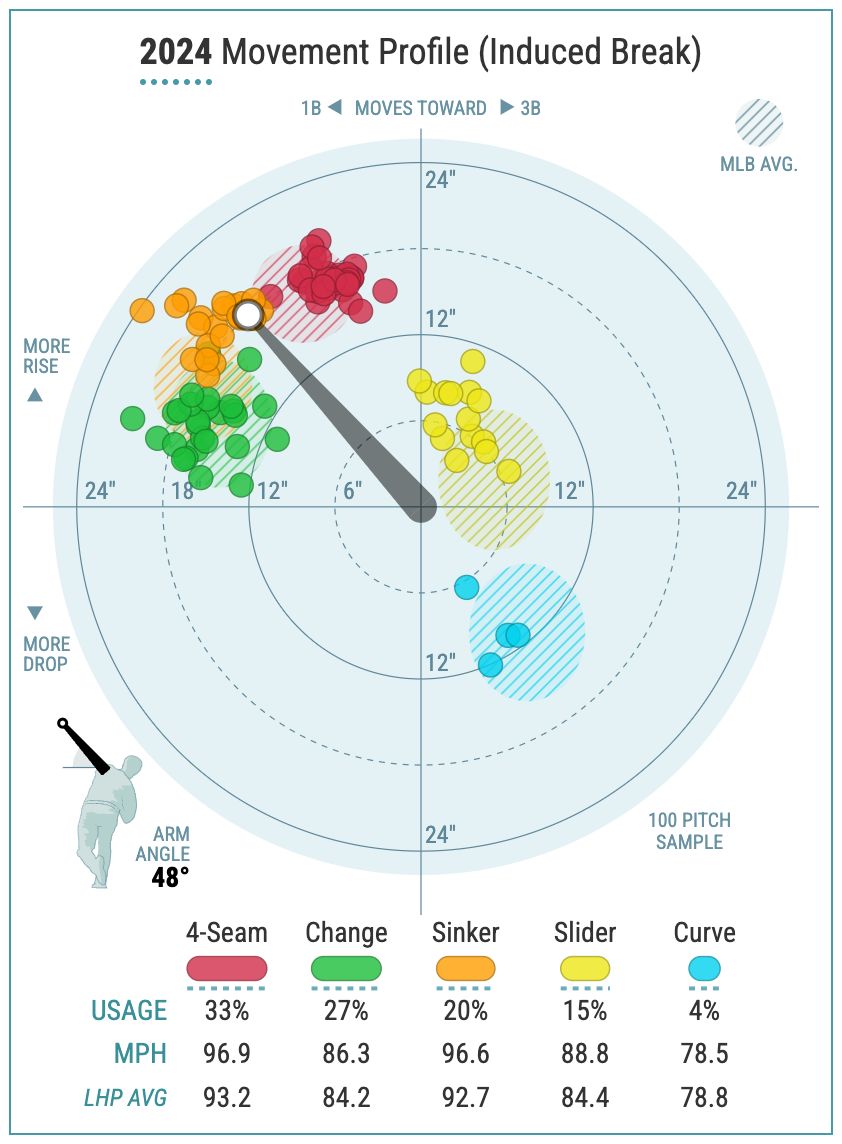
Lefty high over-the-top -- José Alvarado, Phillies (64 degrees)
Alvarado is the most extreme over-the-top lefty in the Majors, and he creates a lot of power on his sinker and cutter with that release, which come in at 97.8 mph and 92.5 mph, respectively. And you tend to see a lot of Alvarado in October, as he's been one of the Phillies' most important high-leverage arms the last two postseasons.
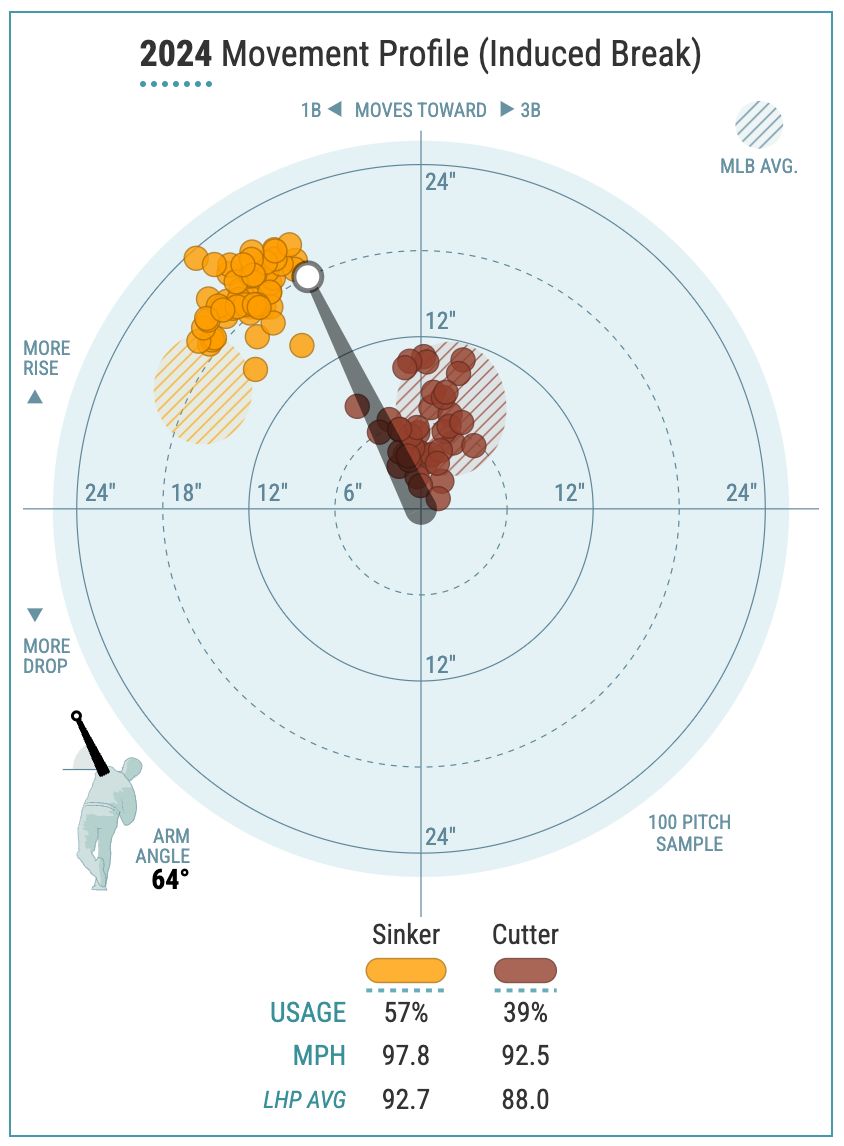
Righty high over-the-top -- Hunter Brown, Astros (60 degrees)
Brown notably mimics the delivery of his pitching idol and now Astros teammate Justin Verlander, and you can see that in their arm angles -- Brown (60 degrees) and Verlander (55 degrees) are two of the most over-the-top righty starters. That helps him throw his four-seamer with the backspin that makes it a rising fastball, thrown in the same style as Verlander, the king of the high fastball.
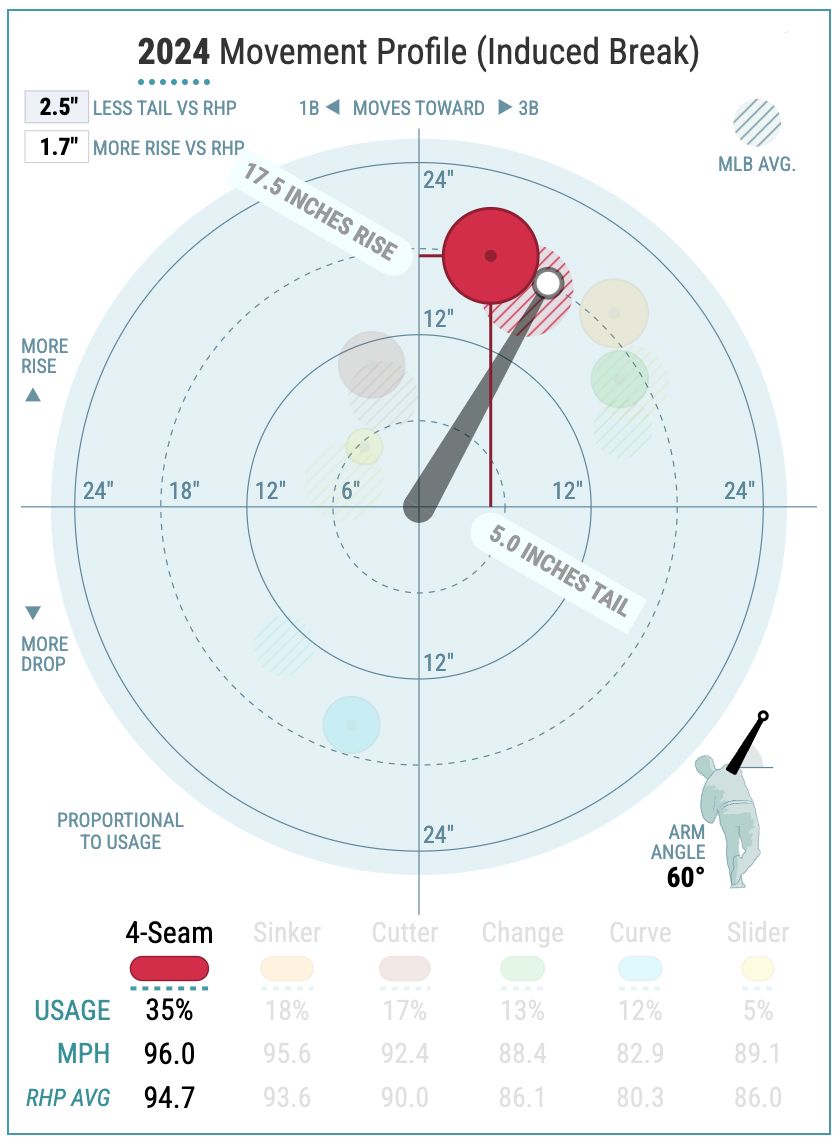
Righty over-the-top -- Dylan Cease, Padres (53 degrees)
Cease has one of the most vertical pitching styles of any big league ace -- everything that comes from his over-the-top arm slot goes up and down in the strike zone, from his rising four-seamer to his neutral slider to his dropping curveball. Cease's four-seamer induces 18.4 inches of rise, his curveball induces 15.8 inches of drop, and his slider is right in the middle. He racked up 221 K's on those three pitches in the 2024 regular season.
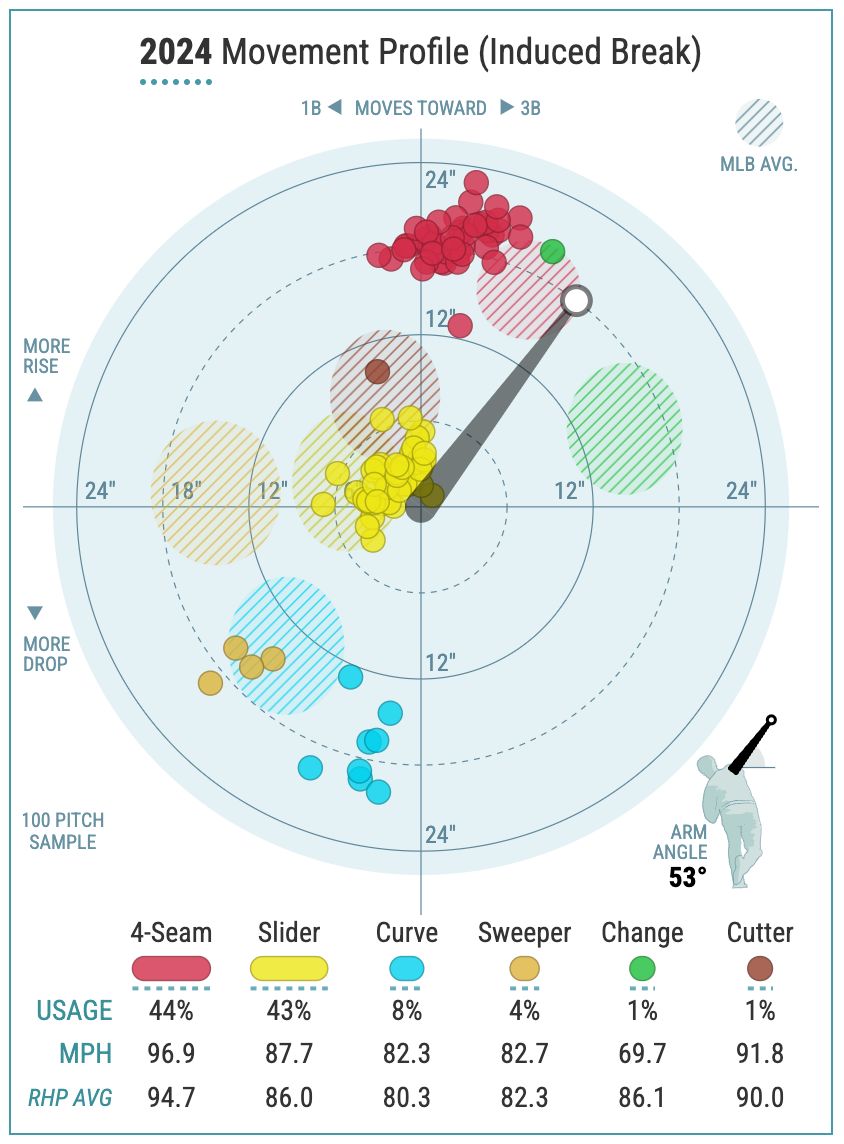
Righty high three-quarters -- Yoshinobu Yamamoto, Dodgers (47 degrees)
Yamamoto's curveball is his signature pitch, and you can see how he creates perfectly mirrored movement between his curve and his fastball out of his high three-quarters arm slot. Yamamoto's release point lets him induce both excellent drop on his curve (5.9 inches more than an average right-hander), and excellent horizontal break (2.5 inches more than average).
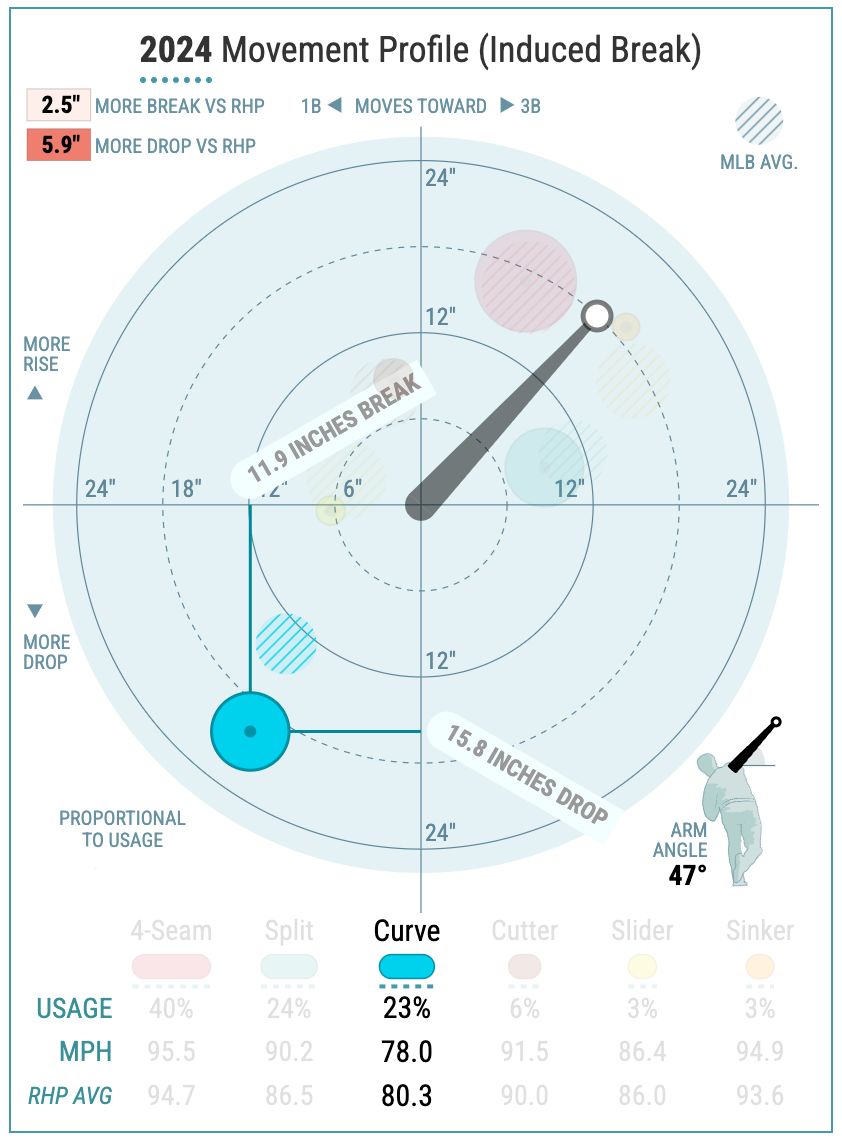
Righty three-quarters -- Gerrit Cole, Yankees (43 degrees)
Several righty aces deliver the ball from this type of arm slot -- Cole, Corbin Burnes and Zac Gallen, to name a few -- and Cole is a good example here of a prototypical power pitcher. His four-seamer, which has been his No. 1 pitch since he went to the Astros in 2018, induces a ton of extra rise compared to his arm slot.
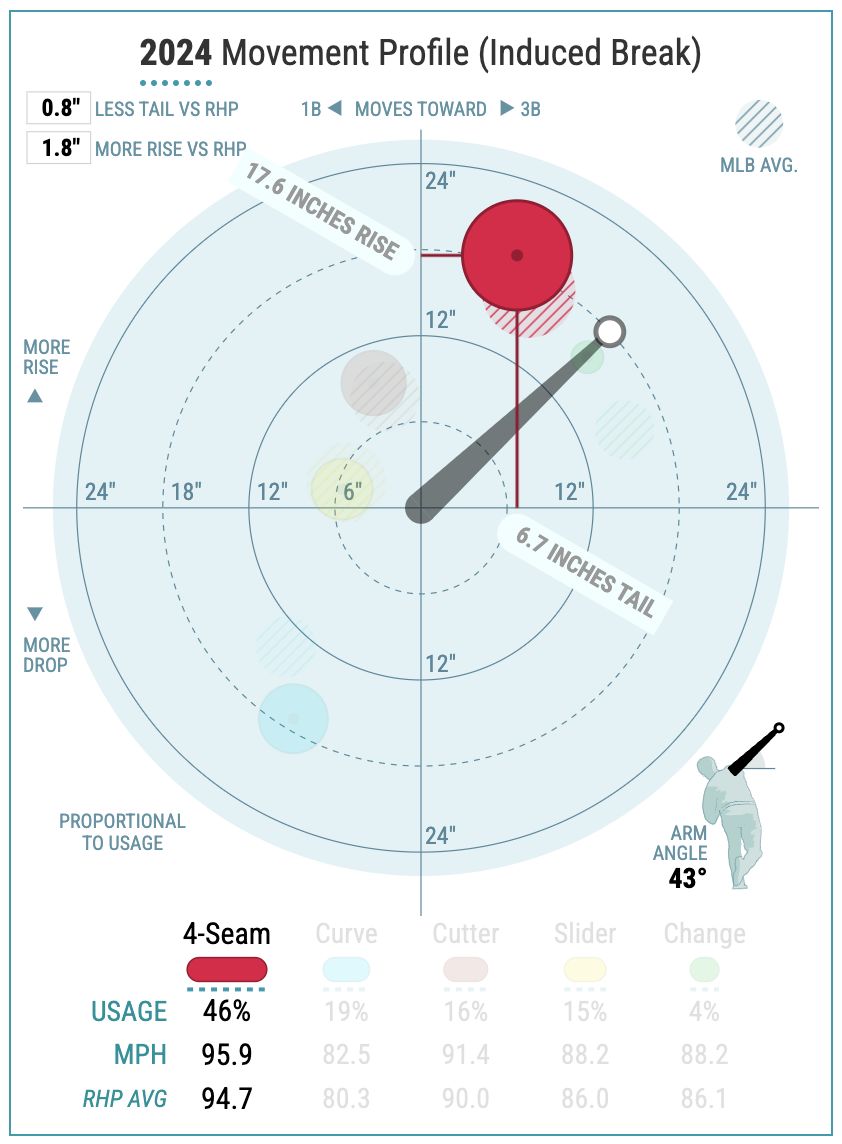
Righty low three-quarters -- Zack Wheeler, Phillies (27 degrees)
Wheeler has lowered his arm slot more and more since he first got to the Phillies in 2020, and he's become more and more of a sidearmer. That may be what's helped him generate the strong side-to-side movement profile between his fastballs, the sweeper he added in 2023 and the splitter he reintroduced in 2024. Wheeler's four-seamer runs 9.5 inches to the arm side, his sinker runs 17.3 inches and his splitter runs 12.8 inches, while his sweeper breaks 9.9 inches in the opposite direction to the glove side.
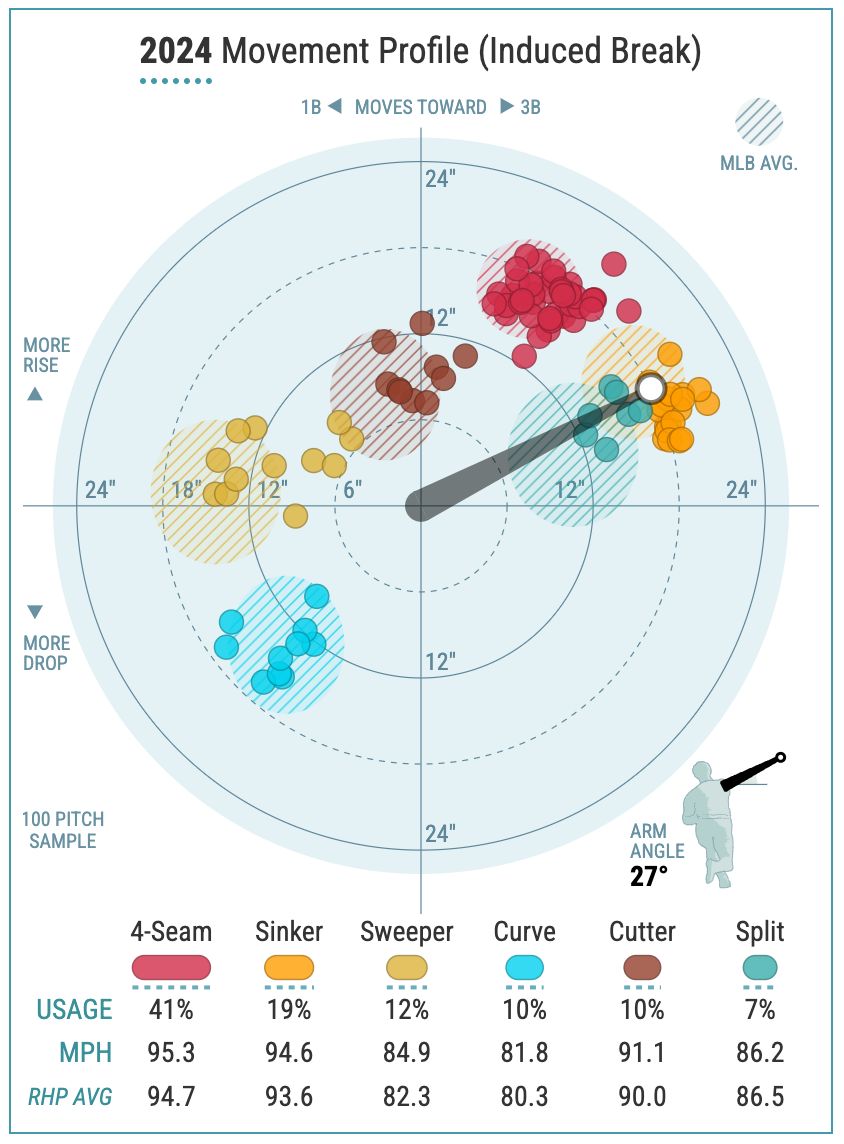
Righty sidearm -- Edwin Díaz, Mets (22 degrees)
The Mets closer blows his power fastball and slider past hitters from a flat approach angle that he creates with his low arm slot. D¨Şaz's low arm slot is also what allows him to create the wicked tail on his heater, which runs an average of 13.6 inches to the arm side, 6.1 inches more than an average big league righty's four-seamer. D¨Şaz will be one of the lower sidearm right-handed pitchers you could see this postseason, along with a few others like the Orioles' Yennier Cano (18 degrees).
